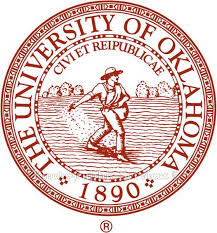Echinococcosis
[1]]]
Description
Echinococcosis is a disease caused by the ingestion of the eggs of tapeworm genus Echinococcus through contaminated food, water, or through direct animal contact. Among the four forms of the disease, this page will discuss Cystic echinococcosis because it is the most significant form of the disease in regards to human health. Cystic echinococcosis, also known as hydatid disease, is caused by the parasite Echinococcus granulosus [2][3].
Epidemiology
More than 1 million people are experiencing echinococcosis at any one time [3]. Cystic Echinococcosis occurs in Africa, Europe, Asia, the Middle East, and Central and South America, with higher rates of infection among populations that raise and slaughter livestock [3]. In areas where Echinococcosis reaches endemic levels, prevalence rates reach 5%-10% among humans, and 20%-95% among livestock (WHO). Endemic areas for human cystic echinococcosis include Argentina, Central Asia, Chile, China, East Africa, Japan, Russia, and Uruguay [5].
Transmission
Transmission depends on a primary host, typically a dog or wolf, to pass the Echinococcus eggs through its fecal matter. From there, the eggs can be transmitted directly to the human host via fecal-oral transmission. Alternatively, the eggs can be passed to an intermediate host, typically some form of livestock, before being transmitted to the human host via fecal-oral transmission.
After ingesting the Echinococcus eggs, the human host's digestive proteolytic enzymes begin to break down the egg membranes, effectively "hatching" the eggs and releasing the larvae into the small intestine.
After they hatch, the larvae are absorbed into the intestinal mucosal wall, and are carried through blood vessels to various organs throughout the body. The most common organs for the larvae to attach include the liver, lungs, brain, and heart.
Once the larvae attach, they begin forming cysts, called hydatids, that slowly grow and fill with clear fluid. The presence of these cysts can go undetected for months or even years, until they increase in size enough to cause noticeable effects in the surrounding tissues.
Pathogenesis
Echinococcus' main method of harming the host comes from the cysts formed by the larvae form, not by the pathogen itself. The cysts, if developed enough, will swell and put pressure on the surrounding tissues, causing eventual blood vessel obstruction and necrosis of the tissue. Additional harm may be inflicted upon rupture of the cysts can cause an allergic reaction and possible anaphylactic shock if the fluid from the cysts spreads via the blood stream to other parts of the body. These ruptures are normally caused by trauma or medical treatment [5].
Virulence Factors
Clinical Features
Symptoms
After infection, an individual can be asymptomatic for several years until the hydatid cysts become large enough to trigger symptoms. Echinococcosis symptoms can include (depending on the location of the hydatids): weight loss, weakness, abdominal pain, nausea, vomiting, chronic cough, chest pain, and difficulty breathing [5].
Diagnosis
Diagnosis is usually based on results from ultrasonography imaging, validated by computed tornography or magnetic resonance imaging (MRI) scans. These imaging techniques can detect the presence of cysts, which can be further confirmed by serological tests that indicate antibodies specific for the cysts. Biopsies can provide differential diagnosis of cysts from tumors [3].
Treatment
Treatment choices are largely dependent on the human resources available, the cost associated with the option, and the stage of the cysts, determined by ultrasound imaging. In many patients, who aren't diagnosed until a very advanced stage of cyst formation and development, treatment options are very limited.
Today, three treatments options exist:
1. Surgical removal, whose effectiveness is limited by the stage of cyst development. In cases where surgery has been used as the treatment option, it has been about 90% effective [1].
2. PAIR technique, which stands for Puncture, Aspiration, Injection, and Re-Aspiration [7].
3.Chemotherapy, with Albendazole as the preferred treatment because of its ability to penetrate into the harmful cysts [5].
Prevention
Periodic deworming of dogs, improved hygiene in livestock slaughtering, and public education campaigns about human hygiene have been found to greatly reduce transmission and infection rates. The World Health Organization has focused on the eradication of the cystic form of Echinococcosis in recent years, and claims: "A programme combining vaccination of lambs, deworming of dogs and culling of older sheep could lead to elimination of cystic echinococcosis disease in humans in less than 10 years" [6].

